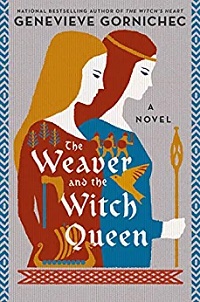True to the gothic tradition, The Vanishing at Castle Moreau takes place at an isolated stone monstrosity – one built by an early 19th-century French émigré in small-town Wisconsin. Numerous women have vanished behind its walls over the years, so the stories go. Some generations of the Moreau-Tremblay family have capitalized on their home’s horrific legend, but its present-day owners have grown weary of the bad publicity.
Fleeing a guilty conscience over past troubles, Cleo Clemmons, who adopts a new surname to hide her identity, takes a last-chance job at Castle Moreau that requires her to organize and clear out an elderly widow’s belongings. Virgie Tremblay is a hoarder, and her loving grandson, Deacon, a sexy celebrity, is wealthy enough to pay for Cleo’s employment – and secretive enough to want his grandmother’s condition kept quiet.
Problem is, someone’s alert to Cleo’s presence. When she finds a mysterious cassette recording on her parked car, one relating to a young woman’s disappearance forty years earlier, she checks it out – and other townies get agitated once they hear it. Plus, eerie nighttime happenings have Cleo believing that the castle’s hauntings are real. (Which they are.)
Cleo’s story has a smart contemporary vibe, a contrast that plays well against the more formal Victorian style of the earlier-set tale. In 1870, Daisy François, an orphan who escaped abusive foster parents, takes a housemaid’s job at Castle Moreau out of desperation. Here, too, an elderly matriarch rules the roost: Ora (Moreau) Tremblay is a bestselling authoress of horror fiction à la Poe, and she revels in (and lives surrounded by) the atmosphere she evokes. Looking even further back, a few chapters set in 1801 introduce the chateau’s ghost, a woman with a crooked hand.
The opening chapters at Castle Moreau pull out all the stops in Gothic-ness – an eccentric male servant, beds drenched in spiderwebs, a maze of abandoned rooms, just to start – and I kept reading to see where this was all going. The mystery in the modern section is cleverly arranged with a neat twist at the end, and the story’s paranormal happenings will have you avoiding dark corners and empty hallways. The romances in Daisy’s and Cleo’s timelines are a bit sudden, but for those seeking out paranormal creepiness and mystery, this novel has both in spades.
The Vanishing at Castle Moreau is published by Bethany House on April 4th, 2023. This review forms part of the novel's blog tour via Austenprose PR.
PURCHASE LINKS
AMAZON | BARNES
& NOBLE | BOOK
DEPOSITORY | BOOKSHOP
| GOODREADS
AUTHOR BIO
Jaime Jo
Wright is the author of eight novels, including Christy Award and
Daphne du Maurier Award-winner The House on Foster Hill and
Carol Award winner The Reckoning at Gossamer Pond. She's also
the Publishers Weekly and ECPA bestselling author of two
novellas. Jaime lives in Wisconsin with her cat named Foo; her husband, Cap'n
Hook; and their two mini-adults, Peter Pan and CoCo.
WEBSITE | INSTAGRAM | FACEBOOK | TWITTER | BOOKBUB | GOODREADS






























